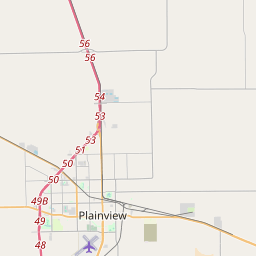The Old MacKenzie Trail
Historical marker location:






General Ranald Slidell MacKenzie
The Old MacKenzie Trail by "Larry" Chittendon
Stretching onward toward the sunset,
o'er prairie, hill and vale,
far beyond the double mountains
winds the Old MacKenzie Trail.
Ah, what thoughts and border memories
does that dreaming trail suggest,
thoughts of travelers gone forever
to the twilight realms of rest.
Where are now the scouts and soldiers,
and those wagon trains of care,
those grim men and haggard women
and the echoes whisper - where?
Ah, what tales of joy and sorrows
could that silent trail relate:
tales of loss, and wrecked ambitions,
tales of hope, of love, and hate:
Tales of hunger, thirst, and anguish
tales of skulking Indian braves,
tales of fear, and death, and danger,
tales of lonely prairie graves.
Where are now that trail's processions,
winding westward sure and slow?
Lost: ah, yes, destroyed progress,
gone to realms of long ago.
Nevermore shall bold MacKenzie,
with his brave and dauntless band,
guide the restless, roving settlers
through the Texas borderland.
Yes, that soldier's work is over,
and the dim trail rests at last,
but his name and trail still lead us
through the borders of the past.
The MacKenzie Trail first crossed by General Ranald Slidell MacKenzie, 4th United States Cavalry, in 1871 in quest of warring bands of Indians.
Erected by the state of Texas with funds appropriated by Federal government to commemorate one hundred years of Texas independence. - 1836 - 1936
As one of the most visible programs of the Texas Historical Commission (THC), historical markers commemorate diverse topics in Texas history, including: the history and architecture of houses, commercial and public buildings, religious congregations, and military sites; events that changed the course of local and state history; and individuals who have made lasting contributions to the state, community organizations, and businesses.
The Battle of San Jacinto fought on April 21, 1836, was the decisive battle of the Texas Revolution, and led to the capture of Santa Anna and the end of the conflict.
The county was officially organized in 1888 and named after Lt. John C. Hale, a hero of the Battle of San Jacinto during the Texas Revolution. Agriculture played a crucial role in the early development of Hale County, with farming and ranching becoming the primary economic activities. The arrival of the railroad in the late 19th century further facilitated trade and growth in the region.
One significant event in Hale County's history was the discovery of oil in the early 20th century. Oil fields were found near the city of Plainview, leading to an economic boom and population growth. The discovery of oil allowed for the establishment of refineries and related industries, transforming Hale County into an important oil-producing area in Texas.
In recent decades, the economy of Hale County has diversified, with the advent of new industries such as healthcare, manufacturing, and education. The county continues to be a major agricultural producer, specializing in cotton, sorghum, and cattle ranching. Hale County is also known for its strong community spirit and has maintained its rural charm while embracing progress and modernization.
Hale County Timeline
This timeline provides a condensed summary of the historical journey of Hale County, Texas.
- 1876: Hale County is founded as a part of the Texas Panhandle.
- 1881: The first permanent settlement, Plainview, is established.
- 1888: The Santa Fe Railroad reaches Plainview, boosting the town's growth.
- 1891: Hale County is officially organized.
- 1892: The first courthouse is constructed in Plainview.
- 1907: The Discovery Oil Well is drilled, leading to an oil boom in the county.
- 1920: The town of Hale Center is incorporated.
- 1930s: The Great Depression hits Hale County, causing significant economic hardship.
- 1941: United States enters World War II, causing Hale County to experience an increase in agricultural production.
- 1950s: The introduction of irrigation systems revolutionizes agriculture in the county.
- 1980: Hale County experiences an economic downturn due to a decline in the oil industry.
- 1990s: The establishment of wind farms begins to diversify the county's energy sources.
- 2008: Hale County suffers from a severe drought, affecting agricultural production.
- 2010s: Renewed focus on economic development and tourism to boost the county's economy.